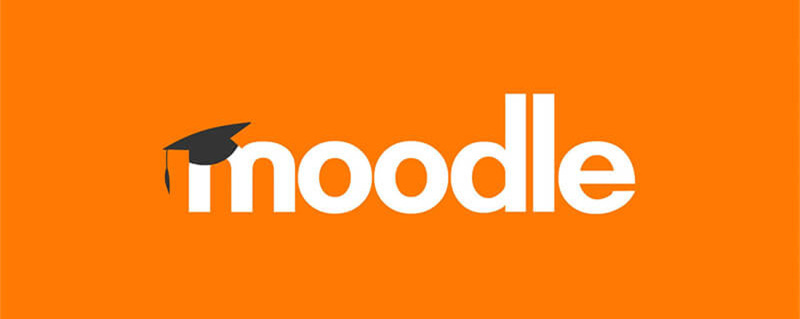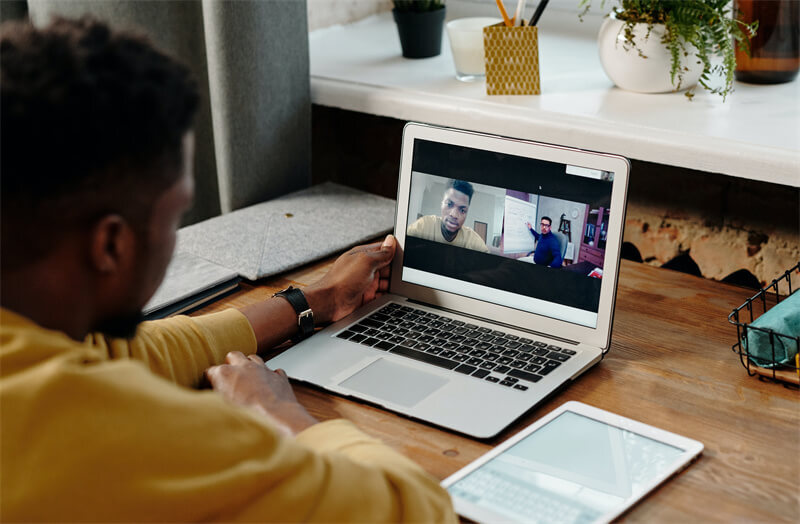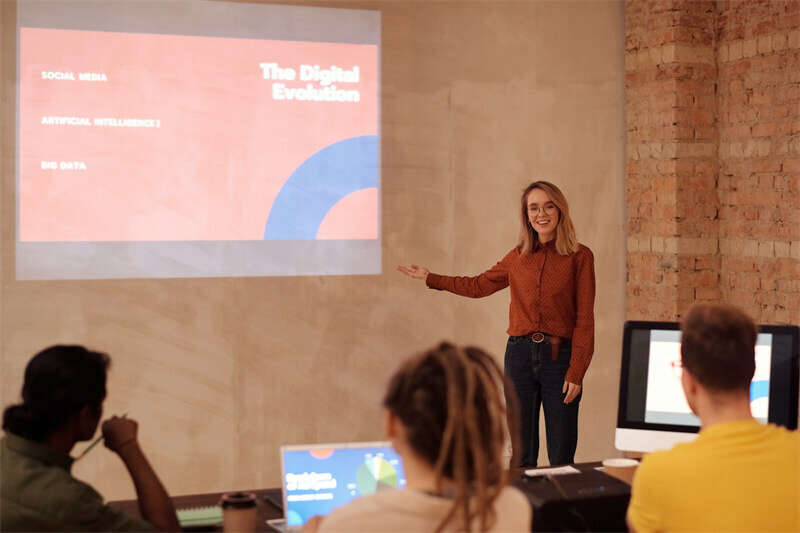What Is A Virtual Classroom And How to Set It Up?

In today's tech-wild world, where time is a precious commodity, attending traditional in-person classes can be challenging for individuals looking to enhance their skills or acquire new knowledge. Luckily, technological advancements have paved the way for virtual classrooms, offering a flexible and convenient alternative to traditional education. A virtual online class harnesses the power of the Internet, digital tools, and even virtual cameras to recreate the learning environment online, enabling learners to access educational resources, interact with instructors, and collaborate with peers, all from the comfort of their homes or any location with internet connectivity.
So, let us learn about such platforms and how they can benefit you more in this technologically driven environment.
Part 1: What Is A Virtual Classroom?
A virtual classroom is an online learning environment that replicates the experience of a traditional classroom using digital tools and technologies, much like the growing integration of ICT tools in education, which enhances the overall learning experience. It allows learners and instructors to connect, interact, and engage in educational activities remotely, regardless of physical location. This model is similar to hybrid learning models, where both in-person and remote learners benefit from technology. In a virtual classroom, participants can access course materials, attend live lectures or pre-recorded videos, collaborate with peers, and communicate with instructors through various online channels.
Here are a few examples of types of virtual classrooms:
1. Zoom

Zoom is a famously used video conferencing platform that has become the best virtual classroom platform. It allows instructors to conduct live classes with students, share screens for presentations, use interactive whiteboards, and facilitate real-time discussions through audio and video communication. Zoom also offers features like breakout rooms for group activities and recording options for later reference.
2. Google Classroom

Google Virtual Classroom is an educational platform that provides a virtual classroom environment for teachers and students. It allows instructors to create and distribute assignments, share resources, provide feedback, and engage in discussions with students. Students can access their projects, submit work electronically, and communicate with their peers and teachers within the platform.
3. Moodle

Moodle is another famous, but open-source learning management system (LMS) that enables the creation of a virtual classroom. It offers comprehensive tools for course management, content delivery, assessment, and communication. In Moodle, instructors can organize course materials, set up discussion forums, create quizzes and assignments, and track students' progress. It provides an adaptable and customizable platform for creating interactive and engaging virtual learning environments.
These examples represent just a few online classroom platforms available today.
Part 2: Why Virtual Classroom Is Better than Real Classroom?
While traditional in-person classrooms have their merits, virtual classrooms offer several advantages.
Here are six such reasons why AU virtual classrooms are considered better in certain aspects:
1. Flexibility and Convenience
Learners can access course materials, lectures, and assignments at their own pace and time, allowing them to fit their studies around their existing commitments. This is particularly beneficial for individuals with busy schedules, working professionals, or those who have other responsibilities to manage. With virtual classroom setup, you do not need to commute or adhere to a fixed program. Thus, learners can learn from anywhere with an Internet connection.
2. Accessibility and Inclusivity
Modern digital classrooms break geographical barriers and promote inclusivity. Learners from different locations can access quality education regardless of their physical proximity to educational institutions. This is especially advantageous for individuals in remote areas or those with limited educational resources. These classrooms provide equal opportunities for diverse learners to acquire knowledge and skills, creating a more inclusive learning environment.
3. Enhanced Learning Experience
Features like live video conferencing, chat rooms, virtual whiteboards, and multimedia content make the learning process engaging and dynamic. Additionally, a class in an online classroom offers personalized learning experiences through adaptive learning techniques and individualized feedback. Learners can also access various digital resources, including e-books, online libraries, and multimedia content, enriching their learning journey.
4. Collaboration and Global Connections
Through online discussions, group projects, and peer-to-peer interaction, learners can engage with individuals from diverse backgrounds, cultures, and perspectives. This promotes a rich exchange of ideas, encourages teamwork, and broadens learners' horizons. Virtual classrooms provide a global networking and collaboration platform, creating opportunities for cross-cultural learning and understanding.
5. Cost-Effectiveness
Learners save on commuting, accommodation, and physical learning materials expenses. Instructors can reach a larger audience without extensive infrastructure or travel expenses. Moreover, virtual classrooms often offer flexible pricing models, allowing learners to choose from various affordable course options.
6. Personalized Learning and Individual Progress Tracking
Online classrooms often incorporate features like learning management systems (LMS) and data analytics. Instructors can monitor students' progress, identify areas of improvement, and provide targeted support. Virtual classes can leverage adaptive learning techniques, where the content and pace of instruction are tailored to individual student's needs and learning styles. Such a personalized approach promotes a more effective and efficient learning experience, ensuring each learner receives the support and resources necessary to succeed.
Thus, virtual classroom learning offers distinct advantages over traditional real classrooms, making them a preferred choice for many individuals seeking education and skills development. So, you, as an educator, can harness the power of technology to provide a modern and inclusive approach to education, enable learners to overcome barriers, and achieve their educational goals in a way that fits their unique circumstances and needs.
Part 3: How to Create A Virtual Classroom?
So, now that you know what a virtual online classroom is, let us explore how to set it up and what equipment you would need:
Step 1: Define Learning Goals, Target Audience, and an LMS
Begin by clarifying your learning objectives and identifying the target audience for your virtual classroom. Determine the specific skills or knowledge you want to teach and the level of expertise you are targeting.
Then, select a suitable learning management system (LMS) that meets your requirements with features such as content creation and delivery, student enrolment and progress tracking, assessment tools, and communication capabilities.
Step 2: Test Your Equipment and Internet Connection
Ensure your equipment, such as a computer/laptop, webcam, microphone, and internet connection, is in good working condition. Test the audio and video quality and the stability of your internet connection to avoid technical difficulties during your virtual classes.
Best Webcam for Online Classes: OBSBOT Tiny 2 4K Webcam
Our recommended tool to enhance your virtual online class setup is the OBSBOT Tiny 2, a versatile 4K webcam with advanced features like:
- WhiteBoard Mode: Place the camera in front of a whiteboard or any flat surface where you're writing or drawing. Tiny 2 will automatically track the content on the whiteboard and adjust its focus and framing to ensure the content is captured clearly.
- High-Quality 4K Resolution: Its high-definition video experience with its 4K resolution capability offers crisp and clear visuals that enhance your learners' viewing experience. It ensures they can see and follow your presentations, demonstrations, and shared content with utmost clarity and detail.
- AI Tracking: With advanced AI tracking technology, you can automatically track your movements, ensuring you are always in the frame during virtual classes. This feature provides a seamless experience for instructors and learners, eliminating the need for constant adjustments.
- Beauty Mode: OBSBOT Tiny 2 offers a built-in beauty mode that enhances your appearance during a live virtual classroom. This feature helps improve the overall video quality and ensures a professional look.
- Multiple Viewing Angles: The multiple viewing angles of Tiny 2 allow you to customize the camera perspective according to your teaching requirements. Pick from wide-angle views to capture a larger area or a close-up shot to focus on specific details or demonstrations during your virtual classes.
- Security: It provides options for privacy protection, such as a physical lens cover and encryption features, ensuring the confidentiality of your virtual classroom sessions.
These features of OBSBOT Tiny 2 further contribute to creating a professional and immersive virtual online class environment where instructors and learners can benefit from enhanced visual quality and flexible camera perspectives.
Step 3: Create Engaging Content and Set Up Virtual Classrooms and Courses
Develop high-quality educational content, lectures, presentations, videos, quizzes, assignments, and supplemental resources. Make your content interactive and engaging to capture learners' attention and facilitate their understanding.
Then, within your chosen LMS, organize your content logically, such as by modules or topics. Set up the course structure, including lesson plans, assignments, and assessments, to guide learners through learning.
Step 4: Incorporate Interactive Tools and Communication Channels
Utilize various interactive tools available within your LMS to enhance the learning experience. These may include live video conferencing, chat functionalities, discussion forums, virtual whiteboards, and collaborative document editing tools. Ensure clear communication channels for learners to ask questions, seek clarification, and engage in discussions.
Step 5: Facilitate Collaboration and Peer Interaction
Promote collaboration and peer-to-peer interaction among learners. Encourage group projects, discussion forums, and virtual breakout rooms for collaborative activities. This action will foster a sense of community and shared learning experience, enhancing engagement and knowledge sharing.
Step 6: Evaluate and Improve
Regularly assess the effectiveness of your virtual classroom by gathering feedback from learners and monitoring their progress. Review the course content, teaching methods, and learning outcomes. Make necessary changes based on feedback to improve the learning experience and ensure the attainment of your learning goals.
Conclusion
So, what did we learn today? First, we spoke about virtual classroom and how it has impacted our daily lives, including students, teachers, and organizations. Then, we detailedly analyzed how online classrooms of today perform better than traditional old-school-type classes. From flexibility to time-saving to money, they offer a myriad of features.
Are you, too, planning to offer coaching via your interactive virtual classroom? So, don't wait any longer. Sign up for an online communication platform right away and make your dream a reality with OBSBOT Tiny 2 webcam.

















